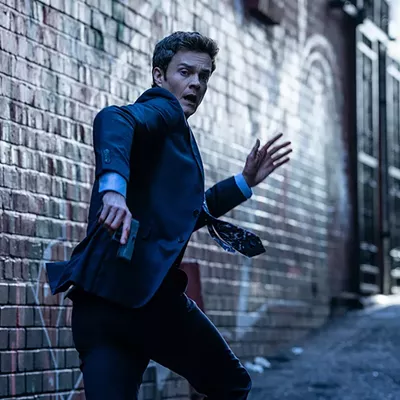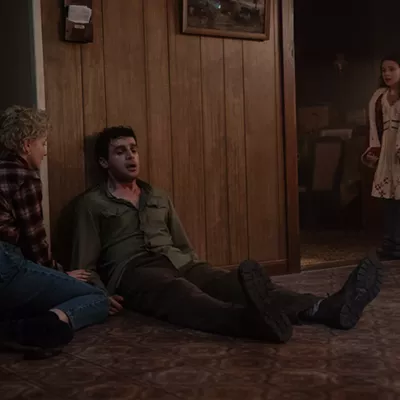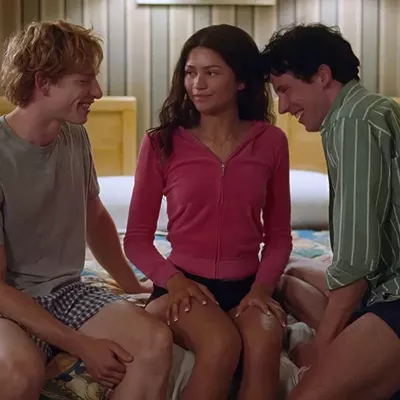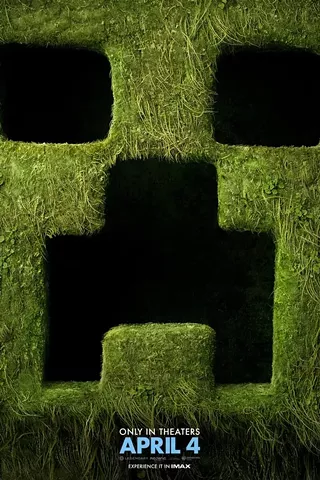Last Days is not the best of his last three films, but it is an amazing work of art, one that does something that Van Sant, and very few other directors, dare to do: It trusts the audience. Telling the tale of the last two days in the life of a Kurt Cobain-esque rock star, Last Days offers no judgments, provides no storyline, and doesn't ever stoop to explaining what it's showing you, or, even more importantly, telling you how you should feel about it.
Instead, Van Sant and genius cinematographer Harris Savides have created a richly textured film that eschews the insipid, cut-a-second style that's currently polluting our theaters. In fact, there are probably 1/20th as many edits in this film as in the average action thriller, and with good reason: Van Sant and Savides know how to compose a shot, so they don't have to constantly cut away in order to keep an audience interested. Sure, if you have no idea where to put a camera, how to balance the colors in a scene, or how to arrange objects for the most subtle and pleasing of effects, you're going to need a high-priced editor with a trigger finger. Van Sant and Savides can rely instead on those two commodities that are so commonly denigrated by the stars of right-wing talk radio: taste and artistic talent.
The film takes place in a sumptuously rotting mansion in the Pacific Northwest. There, grunge-rock sensation Blake (Michael Pitt, but he doesn't suck this time!) is hiding from fame, friends and reality. He wanders the grounds in a drug-addled daze, not interacting with the four other people who mysteriously share his home.
Or at least it's probably a drug-addled daze; Van Sant never shows drugs being taken. Rather, he focuses on the mundane moments of these last days, avoiding narrative elements in order to emphasize a sense of mood and place. The standard take on a story about someone's last days would be to extract from their biography those moments that seem to tie together into a story. This is, of course, artificial: We can always pick a narrative out of the infinity of details in anyone's life. But Van Sant isn't interested in a tale so much as a texture.
It's hard to describe how effectively he pulls this off. Two good examples: In one scene, Blake runs out of the house and into the woods. The camera follows him until he passes a copse of tall weeds, and then it stops. The shot remains on these weeds as they move just slightly in the breeze. It's breathtakingly beautiful, and the idea of allowing the main character to simply run out of the scene is one that makes perfect sense in the context of the film, is aesthetically pleasing, and yet would never fly in an ordinary movie, because audiences tend to want to follow the action. By not following it, Van Sant brings out the richness of the things that are ignored by cinematic conventions and effectively challenges the legitimacy of those conventions by succeeding without them.
In another scene, Blake is seen through an enormous picture window as he slowly puts together a song, moving from bass to drums to guitar to microphone and looping each instrument into a delay box. The song he develops is perfectly hypnotic, and the camera's only motion is to very slowly pull back, so that over the course of six or seven minutes, the framed area roughly doubles. Instead of having a moving camera and a series of cuts direct our attention to specific story elements, Van Sant just lets the camera take in a wide area and allows the audience to decide for themselves what's important.
Although the film is centered on these wordless moments, the occasional dialogue (also written by Van Sant) is brilliant, weird and strangely natural. A cameo by Harmony Korine as a fan who tries to tell Blake about "the best D&D game ever," and a sequence where an ad salesman for the Yellow Pages stops by to see if Blake wants to renew his ad for his railroad parts store (the salesman apparently has the wrong man and the wrong address) are wickedly funny without taking away from the airy gravity of the film.
The only downsides to Last Days are an awful performance by Sonic Youth bassist Kim Gordon and an out-of-place performance by magician Ricky Jay. But I guess Van Sant can be excused for giving acting roles to people who are so good at other things.
Though Last Days might seem to be about nothing, there's an almost endless list of things that it does well. The music is evocative without ever being manipulative or even offering any sort of emotional cue; the majority of the actors perfectly execute the dreamy quality Van Sant is after (especially Scott Green as Kurt's enabling friend); the visuals are so beautiful that virtually any single frame of this film could be blown up and hung in the Louvre (Savides has a dual degree in film and still photography), and most importantly, the narrative style of the film trusts that the audience is intelligent enough to piece together a story on their own without needing to be lectured to or coddled or rewarded with an unearned sense of completion.









